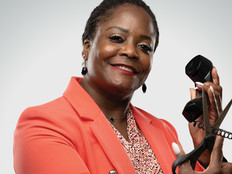How VoIP Supports Telework for Agencies
VoIP has gained traction in recent years for government use. New and emerging features are drawing heightened attention, experts say, and the pandemic-driven rush to work from home has only accelerated that interest.
“It’s the flexibility — any place, any device, any modality. You’re not chained to your desk,” says IEEE Life Fellow Stuart Lipoff. “It will work on an app on your cellphone, it will work on your tablet or on your home computer.”
Thanks to recent enhancements, which CDW•G helped to implement, Lyons used the IP-based system to directly support USU’s pandemic response. “The upgrades allowed the university to get the users up and running during the pandemic, to troubleshoot any issues and have everybody work remotely during this time,” he says.
Those upgrades incorporated an implementation of Cisco Jabber, which is a tool that delivers instant messaging, voice and video calls, voice messaging and conferencing. That functionality provided a major boost during the pandemic.
“It allows your number to follow you anywhere,” Lyons says. “You’re able to pull up your communication profile just as if you were in the office.”
In addition, USU also deployed Cisco Emergency Responder to implement increased functionality for emergency calling. New Singlewire InformaCast Fusion also sends instant messages to those on campus during emergencies.














